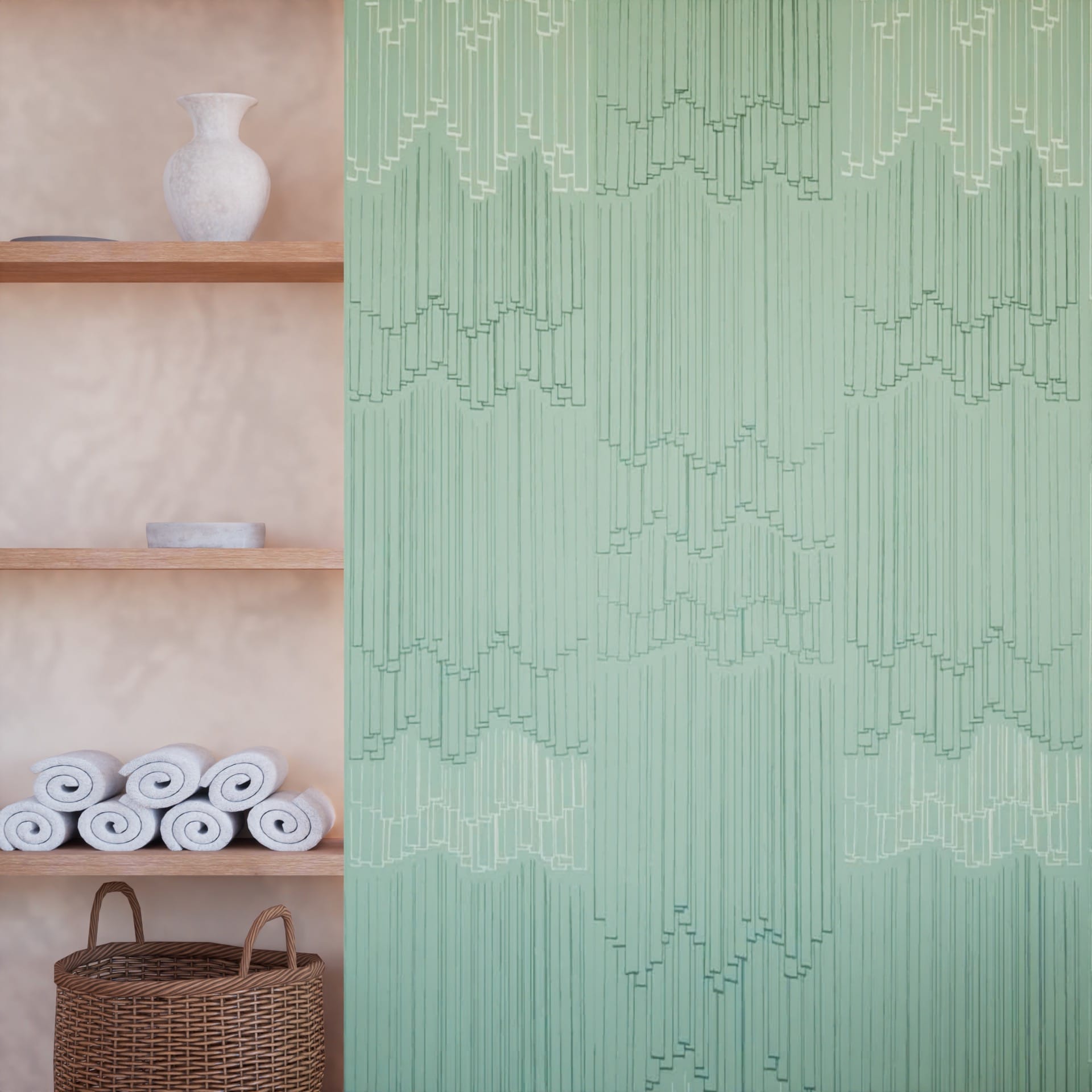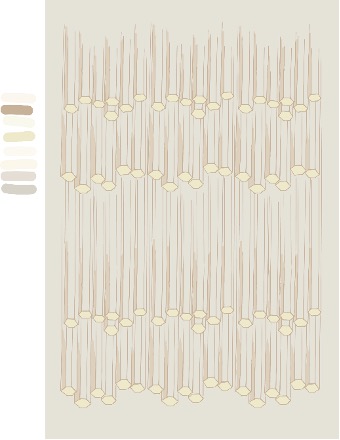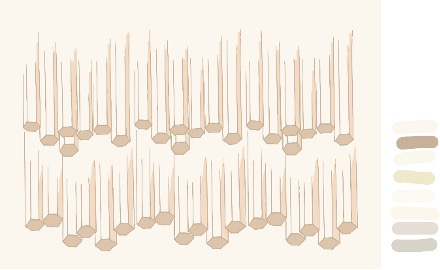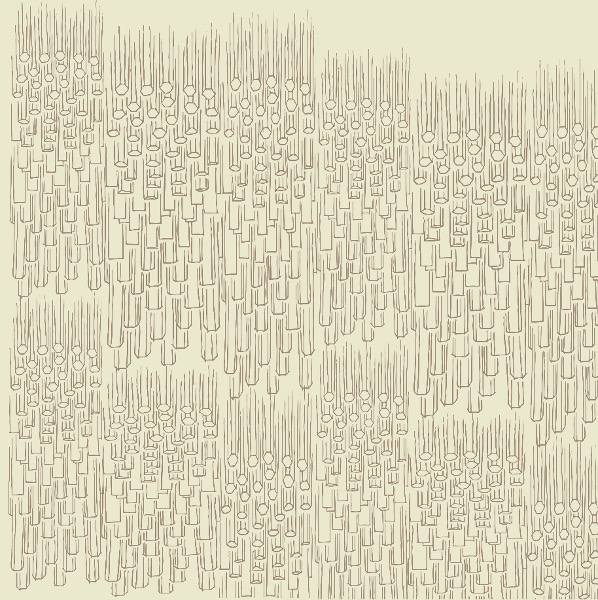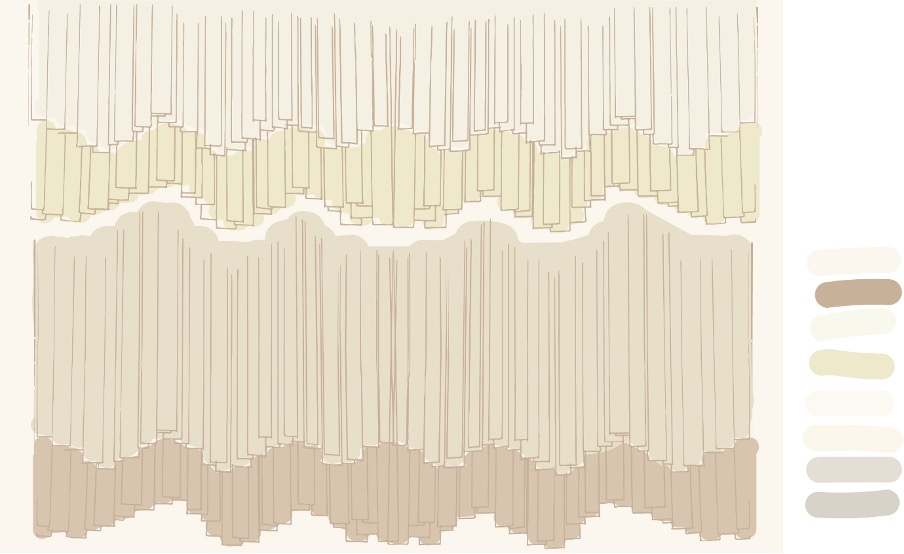Symphony of Stones
Reflections on our design philosophy and the process of creating the Symphony of Stones range.
As a creative company we follow a fluid path in our working process. Sometimes we begin with historical inspiration, a meaning, a design we want to preserve and use for new generations. We then envisage the architectural or interior spaces that would suit the topic and develop the artwork from there. Occasionally we start with the space itself, asking questions such as “What do I want to feel when standing in this space?”. We imagine similar feelings we have, when connecting with heritage and nature, and connect them in our design.
And there is research and trial, experimentation, and error...lots of errors, happy accidents and “Eureka!” moments 😊
While we share some insights of our creative process with you, we would like you to understand some of what goes into the creation of our artworks. Here I use the example of the ‘Symphony of Stones’ wall mural, inspired by the natural rock formations found in the Azat River Valley in the Gorge of Garni, Armenia.
Many artists will see something different from one source of inspiration, and the same feature or landscape can inspire many different artworks.
The creation of the Symphony of Stones wallpapers started with an inspiration from the majestic rock formations in Garni. Being there you experience the calmness of nature, your own insignificance in the face of space and history. It is pure magic to be in the presence of these ancient rocks.
We considered many different designs, all inspired by these rock formations, which laid the seeds for possible future concepts. But the starting point for this… and these have laid the seeds for possible future concepts... but the starting point for this particular design came from a desire to create an artwork for a room that would be calming and set a tone suitable for a meditation and relaxing space.
As we always do, we asked, “How do you want to feel in the room?”.
The resulting design works to recreate the feeling of being in the Garni gorge, but in a different space. To achieve this, we ‘zoomed out’ from the rock formation and created a wall mural which avoids pattern repetition. This gives the eye the experience of surveying the rich and constantly varying landscape as the gentle cascade of the suspended stone columns undulates across the piece.
Following the same emotion-led process, if a design was for a different environment in a workplace or perhaps a dynamic hotel, then an alternative interpretation of the regular polyhedral rock formations would have led to a more zoomed-in emphasis of the angular geometrical pattern, making use of more dramatic colour and sharper edges. This type of design may be something we release in the future, but again drawing upon the same landscape for its inspiration.
The artistic process is not linear. To create this artwork we have worked to capture some of the essence of the stone and its formation, trying to answer to these questions.
Scale/angle: Zoomed in and zoomed out versions
Features: Emphases on geometric features, cascade of stones...
Movement: Static, dynamic...
The repeat: Mural with large repeat
Which aspect to emphasise? The monument consists of huge, paradoxically symmetric hexagon and pentagon basalt columns (nearly 50 metres high). These stones are suspended, seemingly regardless of gravity and resemble an organ, which explains why it is also referred to as “Basalt Organ Pipes”.
Here are some sketches form our artistic process...
And finally, we were getting there 😊
Some facts:
One of the most well-known and beautiful natural monuments of Armenia is situated in the province of Kotayk, not far from the village Garni – the Symphony of Stones. This type of very rare geological feature is found at only a few sites in the world.
Another famous example of this type of volcanic rock is the Giant’s Causeway which linked Northern Ireland with the Scottish island of Staffa (home of Fingal’s Cave). As well as the spectacular Garni Valley, the same type of rock formation can be found in several locations in Armenia, including the Azat gorge and in Tsaghkadzor.
